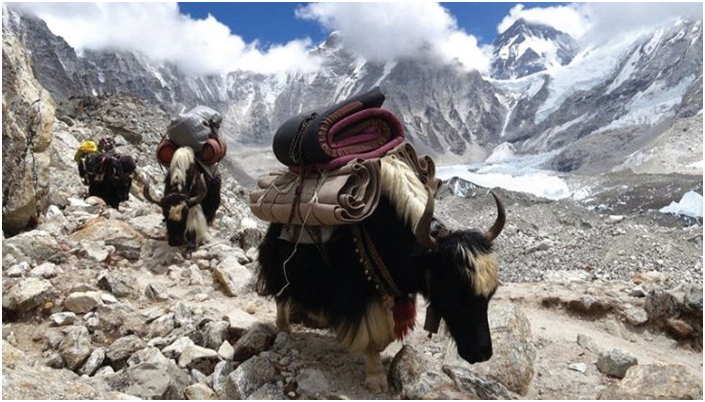MAS and IFSCA to Pursue Cross-border FinTech Innovations (GS Paper 3, Economy)

Why in news?
- Recently, the Monetary Authority of Singapore (MAS) and the International Financial Services Centres Authority (IFSCA) signed a FinTech Co-operation Agreement (CA) to facilitate regulatory collaboration and partnership in FinTech.
Key Highlights of FinTech CA:
Regulatory Sandbox Collaboration:
- MAS and IFSCA will leverage existing regulatory sandboxes in their respective jurisdictions to support experimentation of technology innovations. This includes referral of companies to each other’s regulatory sandboxes and enable innovative cross-border experiments in both jurisdictions.
- The CA will also allow MAS and IFSCA to evaluate the suitability of use cases which could benefit from collaboration across multiple jurisdictions, and invite relevant jurisdictions to participate in a Global Regulatory Sandbox.
Sharing of Information:
- MAS and IFSCA will share non-supervisory related information and developments on innovation in financial products and services, facilitate discussions on emerging FinTech issues and participate in joint innovation projects.
About MAS, Monetary Authority of Singapore:
- The Monetary Authority of Singapore (MAS) is Singapore’s central bank and integrated financial regulator. As a central bank, MAS promotes sustained, non-inflationary economic growth through the conduct of monetary policy and close macroeconomic surveillance and analysis.
- It manages Singapore’s exchange rate, official foreign reserves, and liquidity in the banking sector.
- It is also responsible for well-functioning financial markets, sound conduct, and investor education.
About IFSCA:
- The International Financial Services Centres Authority (IFSCA) is a unified authority for the development and regulation of financial products, financial services and financial institutions in the International Financial Services Centres in India.
- Housed in Gujarat International Finance Tec-City (GIFT City) in Gandhinagar (Gujarat), GIFT-IFSC is the maiden International Financial Services Centre in India (IFSC).
- Established by the Government of India under the IFSCA Act 2019, IFSCA has laid down principle-based regulatory frameworks governing myriad of activities, such as banking, finance companies, capital markets, funds management, insurance, aircraft & ship leasing, etc., which have been globally benchmarked and designed to ensure ease of doing business.
Sensitive points across 1,800 km of railway tracks identified to reduce elephant deaths
(GS Paper 3, Environment)
Why in news?
- In an effort to reduce elephant deaths in train accidents, the Union Environment Ministry has identified sensitive points along 1,800 kilometers of railway tracks across the country where the probability of such incidents is high.
- On a trial basis, the geo-coordinates of around 15 to 20 sensitive points have been shared with the railways which will take preventive measures at these locations.

Preventive Measures:
- The measures could include simple interventions such as construction of ramps to facilitate movement of wild elephants across railway tracks.
- The reasons for most accidents include stones along the tracks and steep embankments on either side which make it difficult for young elephants to walk. Many times, they are left behind and the adults get run over while trying to save them.
- Mud ramps will be built at these 15-20 sensitive points on a trial basis.
- The railways has also been asked to clear the vegetation, if any, obstructing the view of the railway tracks, especially at bends, at such sensitive locations.
Elephant corridors:
- An elephant corridor is a stretch of forested (or otherwise) land that connects larger elephant habitats and serves as a conduit for animal movement.
- There are 20 corridors in south India, 12 in north western India, 20 in central India, 14 in northern West Bengal and 22 in north-eastern India.
- Elephants regularly use 77.3 percent of the total corridors.
- The Ministry is also revisiting 88 elephant corridors in the country to ascertain whether these are “active or have become dysfunctional and if any new corridor has been created”.
- The corridors could also be notified to give legal protection to the movement of elephants.
Use of AI:
- In August 2022, the Tamil Nadu forest department proposed to initiate an Artificial Intelligence (AI) based system for preventing elephant deaths on railway tracks in the Madukkarai forest range of the Coimbatore forest division.
IAFs Project Cheetah
(GS Paper 3, Environment)
Why in news?
- Indian Air Force (IAF) is all set to introduce Project Cheetah, which will help weaponise Israeli drones in all defence wings via Indian manufacturing units.

What is Project Cheetah?
- Under the ambitious Project Cheetah, the Indian Air Force wants to upgrade its existing fleet of Israeli-origin Heron unmanned aerial vehicles with better communication facilities and missiles which can target enemy positions from long range.
- The IAF is the main lead in the project under which the Israeli drones in the Navy and the Army are also planned to be upgraded with strike capabilities and better surveillance and reconnaissance pods.
Why upgrade?
- The three services for a long time have depended upon IAF Israeli-made Searcher II and Heron UAVs for reconnaissance and snooping purposes.
- With the upgrade in snooping capabilities, the forces on the ground would also be able to get pinpoint intelligence about hideouts in areas where men have to be involved in operations.
- The upgrades would also enable the ground stations to operate these aircraft from far-off distances and control them through a satellite communication system.
- The surveillance capabilities of the UAVs planned to be upgraded would be similar to the ones that have been acquired by the Indian Army and IAF under the emergency acquisition powers granted to the forces by the government in wake of the ongoing military stand-off.
About Heron UAV:
- Made in Israel, Heron Unmanned Aerial Vehicle is a medium-altitude UAV and can carry up to 250 kg of weight, including a thermographic camera, airborne ground surveillance, visible light, radar systems, etc.
- The Heron UAV is capable of returning to base autonomously in case of lost communication.
What’s next?
- Heron drones of the three services, the Indian Air Force (IAF), Indian Army, and the Indian Navy will be upgraded to be armed with laser-guided bombs, air-to-ground, and air-launched anti-tank guided missiles.
- This project is in the last stage of decision-making.
India-China LAC: ITBP strengthens animal transport wing
(GS Paper 2, International Relation)
Why in news?
- The Indo-Tibetan Border Police (ITBP) has initiated a human resource strengthening plan for its vital animal transport wing that works as a logistics supply lifeline for its posts and troops deployed along the mountainous India-China LAC.
- As part of the plan, a total of 64 personnel in the rank of head constable have been promoted to the designation of assistant sub inspector (ASI) recently.

AT Wing:
- The Animal Transport (AT) wing of the mountain-warfare trained force comprises mules, ponies and Yaks and it is engaged all along the 3,488 km long India-China Line of Actual Control (LAC) for providing logistics, weapons, rations, fuel among other essentials to keep the ‘axis of maintenance’ alive.
- The ITBP border posts and troops are located at some of the most arduous and remote locations at heights ranging more than 18,000 feet that face sub-zero temperature, heavy snow and blizzard from Ladakh to Uttarakhand, Himachal Pradesh, Sikkim and Arunachal Pradesh on India’s eastern flank.
- The wing also runs the anti-sabotage and counter-terrorist K9 (canine) training centre that prepares patrol, assault and sniffer dogs for a variety of security duties including VIP protection and conducting anti-Naxal operations.
About ITBP:
- Indo-Tibetan Border Police Force (ITBPF) is a Central Armed Police Force functioning under the Ministry of Home Affairs, Government of India.
- ITBP was initially raised under the Central Reserve Police Force (CRPF) Act, 1949. However, in 1992, parliament enacted the ITBPF Act and the rules were framed in 1994.
- The ITBP was raised on 24th October, 1962 during the India-China War and is a border guarding police force specializing in high altitude operations.
- Presently, ITBP is deployed on border guarding duties from Karakoram Pass in Ladakh to Jachep La in Arunachal Pradesh covering 3488 km of Indo-China Border.





